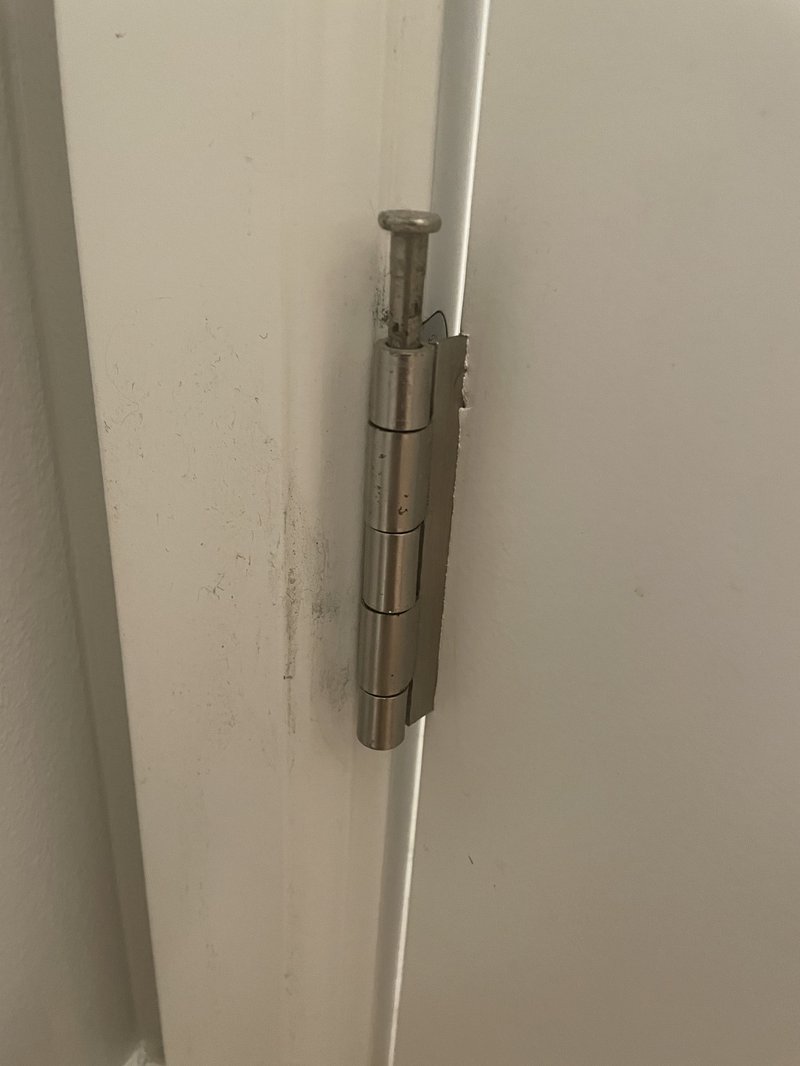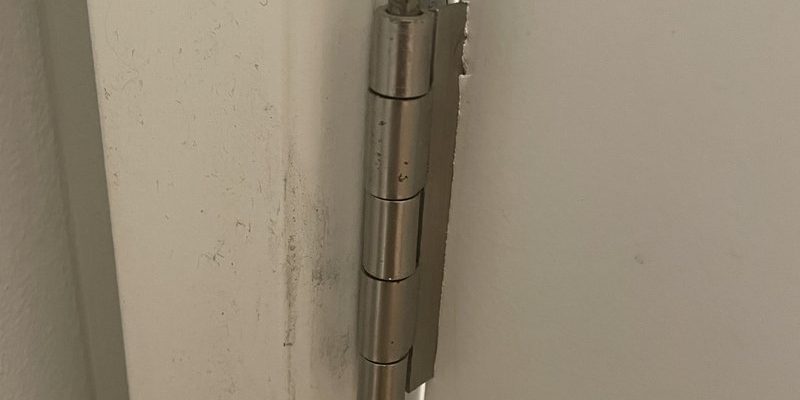
Here’s the thing: an exterior door hinge pin that keeps rising out isn’t just about looks. It can throw your whole door out of alignment. You might find yourself pushing, pulling, or yanking to get the door closed, or even see daylight peeking through the frame—never a good sign for security or energy savings. If you’ve ever wondered why your door’s acting up or how to keep that stubborn hinge pin in place for good, you’re in the right spot.
Let me explain what’s really going on with a loose door hinge pin, why it matters, and how any handy beginner can fix it without fancy tools or a call to the pros. Whether your door is a classic wood model or one of those newer steel entry doors with Schlage or Kwikset locks, the root problem—and solution—are surprisingly similar.
Why Do Exterior Door Hinge Pins Rise Out?
When a hinge pin keeps working itself loose, it’s usually not a random fluke. Think about how often you open and close your front door each day. That movement creates constant vibration, and over time, it can make a hinge pin wiggle out of place. If your door is heavy or exposed to wind, the problem gets even worse—especially with older homes where the hinges have seen better days.
Sometimes, the issue can be traced back to how the hinge was installed in the first place. If the hinge plates aren’t flush with the door or frame, or if there’s paint or debris inside the hinge barrel, the pin won’t seat properly. You might also find that the pin itself is too smooth, or the fit is just a bit too loose, so there’s nothing holding it down but gravity and wishful thinking.
Tip: If you see black streaks around your hinge, that’s a sign of friction—and often a clue that the pin has been moving around more than it should.
Weather plays a part, too. Humidity and temperature swings can cause wood doors and frames to swell or shrink, making gaps appear where there were none before. These little changes are enough to let a hinge pin slip upward, especially if nobody’s checked the door hardware in years.
How a Loose Hinge Pin Messes Up Your Door
At first, a rising hinge pin seems like no big deal. You tap it back down with a hammer, the door shuts fine, and you move on. But over time, this tiny problem can turn into a real hassle.
For one thing, a loose pin means the door isn’t supported as it should be. It might start to sag, dragging along the threshold or making a scraping noise every time it moves. In some cases, the door won’t even latch right, so you’re left pushing hard just to get it to close.
Another headache is drafts. Gaps open up around the hinges, letting air sneak in and out. Your heating or cooling bill might creep higher, or you may feel a chilly breeze, especially near the bottom of the door. If the pin works itself out far enough, the hinge could separate, making your door wobbly—or in rare cases, even causing it to fall.
Honestly, if you have kids, pets, or high-traffic entryways, a persistent loose hinge pin is not just annoying—it’s a safety risk. So fixing it isn’t just about peace and quiet. It’s about keeping your door reliable, secure, and in good working order.
Tools and Supplies You’ll Need to Fix a Rising Hinge Pin
Before you get started, you might be wondering: Do I need a toolbox full of fancy gear? Thankfully, not at all. Most fixes for loose exterior door hinge pins are simple and use things you probably already own.
- Hammer: For removing and reseating the hinge pin
- Flathead screwdriver or nail punch: Helps to tap out stubborn pins
- Needle-nose pliers: Handy for grabbing the pin or bending it slightly
- Fine sandpaper or steel wool: To clean off grime or old paint
- WD-40 or similar lubricant: For cleaning, not lubrication (you want some friction!)
- Nail, tack, or center punch (optional): For creating a small detent in the pin
If you need to replace the hinge pin, you can pick up a new one at any hardware store by matching the size and style—most standard residential doors use 3.5-inch or 4-inch pins.
Step-by-Step: Repairing a Loose Hinge Pin That Won’t Stay Down
Let’s break it down, step by step. Even if you’re not super handy, you can tackle this repair in about 15 minutes. Here’s how to get that hinge pin to finally stay put:
- Remove the hinge pin: Open the door partway so there’s no pressure on the hinge. Place the flathead screwdriver under the pin’s edge (at the bottom), then gently tap upward with a hammer. Pull the pin out using pliers if needed.
- Clean the hinge and pin: Check for dust, old paint, or debris inside the barrel. Wipe both the pin and the barrel with a rag, and use steel wool for tough spots. If the pin is greasy, give it a quick wash, then dry it completely.
- Add friction so it stays put: Lightly sand the pin to rough it up. This creates extra grip when it’s reinserted. For even more hold, use a nail or center punch to make a tiny dent halfway down the pin (just one tap with the hammer does it). This helps the pin “bite” in and resists sliding upward.
- Reinsert the pin: Set the pin back in the hinge from the top, making sure it slides all the way down. Tap gently with the hammer. If done right, you should feel a bit of resistance as it seats into its new groove.
Open and close the door a few times. If the pin doesn’t move, you’re in good shape. If it still creeps upward, you may need to try a slightly bigger pin, or bend the pin ever-so-slightly by tapping it gently on a hard surface. This creates even more friction.
Pro tip: Avoid lubricating the pin with oil. While it might seem like a good idea for smoother movement, a little friction is actually what keeps it from working loose.
What If the Pin Won’t Stay Down—Even After Repair?
If you’ve tried the steps above and the hinge pin is still determined to make a run for it, there are a few less-common causes to consider. Maybe the hinge itself is bent or too worn out to grip the pin tightly, especially on older doors that have seen decades of use. Or there’s an issue with the door or frame being out of square, so the force of opening and closing is pushing the pin up each time.
Here’s where you might need to swap out the entire hinge. Replacement hinges are cheap and easy to install. Just be sure to buy a model that matches your door’s size and screw pattern. Take a picture of your existing hinge to the hardware store—trust me, it makes matching much simpler.
If you’re working with a steel exterior door and modern lock brand like Schlage or Kwikset, you’ll find that hinge pins and plates are usually standard sizes. Still, double-check before buying, since some higher-end doors use security hinges that only accept certain pins.
You might also want to check for loose hinge screws. If the screws are stripped or the holes are worn out, the whole hinge can shift, letting the pin wiggle more than it should. In that case, you can use longer screws or fill the old holes with wood glue and toothpicks before reinserting the screws.
Alternative Fixes: When a Standard Repair Isn’t Enough
There are a few creative tricks that can help if you’ve tried all the usual steps and your hinge pin still rises out.
- Bend the pin: Place the hinge pin on a hard surface and give it a slight bend. This simple tweak creates pressure inside the hinge barrel, making the pin less likely to work loose.
- Use a small nail or screw: After reinstalling the pin, drive a small finish nail or screw just above the hinge in the door frame (not touching the pin directly). This acts like a stop, physically blocking the pin from rising out.
- Upgrade to locking hinge pins: Some specialty pins are designed with a cap or locking mechanism to keep them in place. These are great for high-traffic doors or if you want extra security.
Note: If your door still sags even after the pin repair, you may have a bigger structural issue. Don’t hesitate to call a carpenter if things seem more complicated than a simple hinge fix.
Why Fixing a Loose Hinge Pin Matters for Security and Comfort
You might be wondering: “Does a loose hinge pin really matter that much?” Absolutely. Exterior doors do more than just keep the weather out—they’re your first line of defense against unwanted visitors and help keep your house safe. A hinge pin that keeps rising out is a weak spot. If a burglar notices, it gives them a possible entry point.
On top of that, a poorly-seated pin lets air, bugs, and moisture sneak in. Over time, it can cause warping or even damage your door frame. The fix might seem small, but the peace of mind is worth a lot.
Plus, there’s just something satisfying about a door that swings smoothly, closes firmly, and stays exactly where it belongs. It’s one of those little victories of homeownership that make your place feel truly yours.
Comparing Universal vs. Brand-Specific Hinge Pins
Most standard residential doors, whether made by big brands like Masonite, Jeld-Wen, or Therma-Tru, use fairly generic hinge pins—so swapping in a “universal” pin is usually fine. That said, a few manufacturers (especially security doors or specialty exterior models) have slightly different pin styles or include anti-removal features.
Universal pins are cheap and easy to find at any hardware store. They fit most hinges, are available in several finishes, and work for the majority of repairs.
Brand-specific pins or security pins might be required if you have a reinforced entry door, especially with higher-end locks or alarm sensors built into the hinges. Check your manual (or look up your door’s brand and model online) if you’re not sure.
If you’re torn between replacing the pin or the whole hinge, remember that most fixes only need a pin replacement. But if the hinge barrel itself is loose, cracked, or worn, swapping out the entire hinge is usually the better long-term solution.
Final Thoughts: Keeping Your Exterior Door Secure and Smooth
Stubborn hinge pins have a way of reminding you that even the littlest hardware matters when it comes to home comfort and peace of mind. Sure, repairing a loose exterior door hinge pin that keeps rising out isn’t the most glamorous DIY project—but it might just be one of the most satisfying. By taking a few minutes to diagnose, clean, and tweak your hinge pin, you’ll stop the problem for good and help your door last for years.
Don’t let a wandering hinge pin get the best of your entryway. With some patience and the right approach, your door will close smooth, snug, and silent—right how it’s supposed to.
